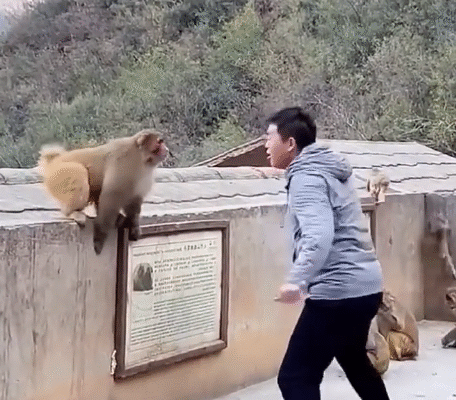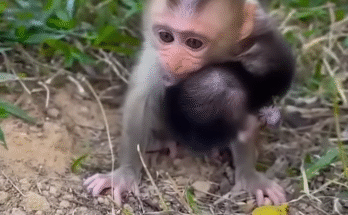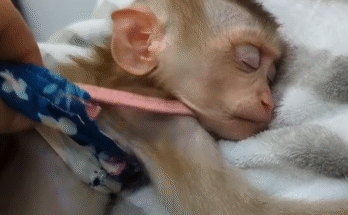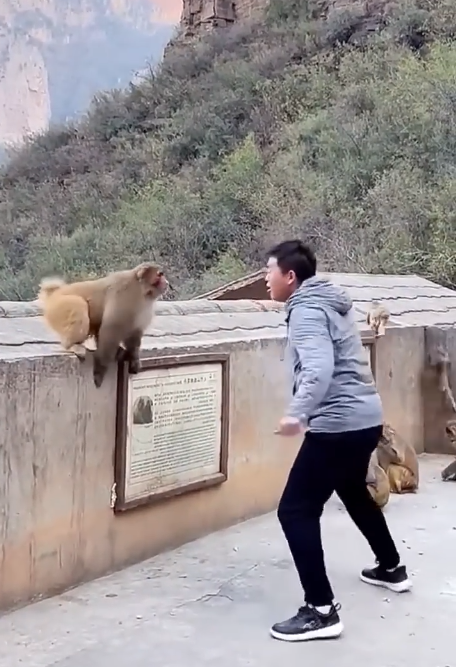
The story of Brother Monkey began in a small mountain village where the forest pressed close on every side, and wild animals often came down to interact with the people. Among them was a cheeky, clever monkey whom the villagers affectionately named Brother Monkey. He wasn’t like the other monkeys in the forest—his eyes sparkled with intelligence, and his movements were so quick that children often gasped in amazement.
It all started when Brother Monkey discovered the village market. The vendors noticed that every time they left bananas unattended, they would vanish in the blink of an eye. One moment the fruit was piled high, and the next, only a few peels fluttered in the wind. No one could ever catch him in the act. His hands were lightning fast—so fast that some villagers swore they had seen only a blur when he snatched food.
“Brother Monkey’s hand speed is too fast!” the children shouted with laughter, clapping their hands as he leapt from one rooftop to another. He became a sort of legend in the village, a trickster spirit in the eyes of the elders.
The First Prank
One summer morning, a farmer was carrying a basket of corn. As he rested by the roadside, Brother Monkey appeared silently. In less than a second, he plucked three ears of corn from the basket and sat nearby, eating with exaggerated delight. The farmer turned and froze—his basket lighter, his corn missing, and the thief staring boldly back at him.
The farmer couldn’t help but laugh.
“You’re too fast for me, Brother Monkey. No human could ever catch you.”
From that day, the legend grew. Villagers began to say the monkey wasn’t ordinary anymore—his skill had passed into something mystical, like the training of martial arts masters in old tales. They joked that he had become a spirit, moving faster than human eyes could follow.
Too Clever for His Own Good
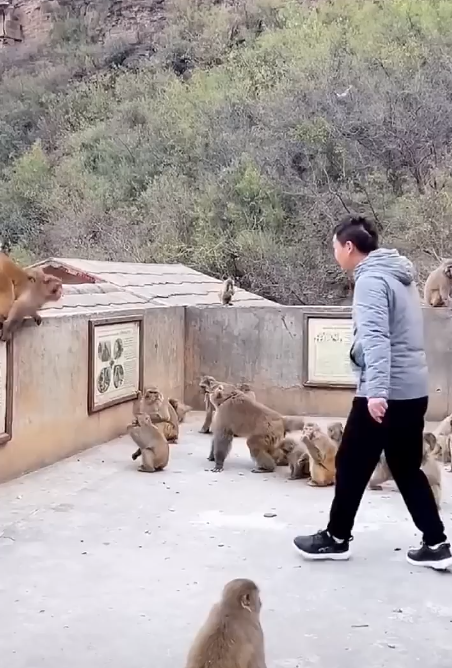
But Brother Monkey’s cleverness wasn’t just about stealing food. He seemed to understand the people, their moods, and their games. Once, when a group of children played marbles, he dashed in, scooped up the shiny glass balls with one hand, and tossed them into the air. The marbles rained down like colorful drops, and the children squealed in delight.
Another time, he saw a man hammering nails into a wooden frame. With astonishing speed, Brother Monkey plucked the hammer right from the man’s hand and scampered up a tree. He tapped the hammer against a branch, imitating the man’s work, and looked smug while the villagers roared with laughter.
Yet the speed of his tricks grew too great, and sometimes dangerous. Once, he darted between a pot of boiling soup and the cook, snatching a carrot before it could be stirred in. The cook shouted in fright, warning him away.
The elders shook their heads. “This monkey’s hand speed is too fast, too mischievous. If we aren’t careful, he may bring harm.”
Becoming a Spirit
Over time, stories exaggerated his abilities. Some said Brother Monkey could steal a hat from a man’s head without him noticing. Others claimed he untied a woman’s shoelaces while she was still walking. A few whispered that he could pluck coins straight from your pocket like a magician.
When the moon was full, villagers told tales around the fire:
“Brother Monkey isn’t just an animal anymore. He has become a spirit. That speed isn’t natural—it’s supernatural!”
The children’s eyes widened, half afraid and half thrilled. They adored the monkey, but they also respected his strange power.
A Day of Trouble
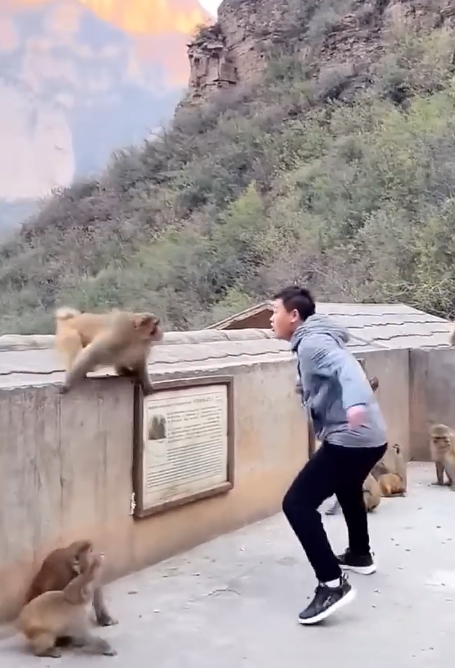
One autumn day, Brother Monkey went too far. During a wedding feast, the village square filled with dishes, fruits, and roasted meats. Musicians played, and dancers twirled in celebration. The smell of food was irresistible.
Brother Monkey darted through the crowd, his hands flashing like lightning. In seconds, skewers of meat, cakes, and even a guest’s shiny necklace were gone. Laughter turned into confusion as people looked around, wondering what had happened.
Finally, he appeared on a roof, cheeks puffed with food, the necklace dangling from his ear like jewelry. He looked so proud, but the villagers grew worried.
“This is dangerous,” said the chief. “Children might try to copy him, but no human can move so fast. If they try, they’ll hurt themselves.”
Please Do Not Imitate
From then on, the villagers added a warning to Brother Monkey’s legend. Whenever they told the tale, they ended with the same phrase:
“Brother Monkey’s hand speed is too fast. Haha, the monkey has become a spirit. Please do not imitate.”
The children giggled at the idea, but they listened. They knew the difference between play and danger. The monkey could move like a flash, but humans needed patience, not recklessness.
The Gentle Side of Brother Monkey
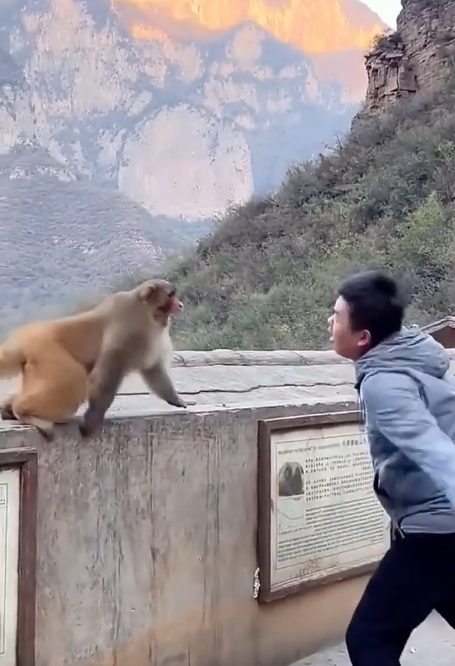
Despite his mischief, Brother Monkey also showed surprising kindness. Once, a young boy dropped his toy in the river. Crying, he watched it float away. Suddenly, Brother Monkey leapt into the water, paddled furiously, and retrieved the toy, returning it with a grin.
Another time, an old woman dropped her walking stick. Before anyone could help her, Brother Monkey swooped down, picked it up, and placed it gently in her hand. She smiled through her wrinkles, whispering, “You really are a spirit, aren’t you?”
It seemed that for every prank, Brother Monkey also gave a gift. His fast hands weren’t only for mischief—they were for helping, too.
The Final Lesson
Years passed, and Brother Monkey grew older. His fur turned silver, but his eyes still sparkled with that same playful energy. He spent more time sitting quietly on rooftops, watching the people he had grown up with.
The villagers had long accepted him as part of their community. They no longer chased him away, and they always left a little fruit on the edge of the market just for him.
Children who had once squealed at his speed grew into adults, telling their own children the legend. They always laughed at the stories of missing bananas and flying marbles, but they also repeated the warning:
“Brother Monkey’s hand speed is too fast. Haha, the monkey has become a spirit. Please do not imitate.”
And so, Brother Monkey lived out his days not just as an animal, but as a legend—a symbol of cleverness, mischief, and the fine line between fun and danger.
Reflection
Brother Monkey’s story teaches us more than just the joy of laughter. It shows how intelligence and skill can be admired, but also how they should be used wisely. His fast hands entertained the villagers, but when he pushed too far, he risked harm.
The villagers respected him not only for his speed, but also for his spirit—his kindness, his playfulness, and his uniqueness. He became something greater than a monkey; he became a story that lived in the hearts of everyone who met him.
So when you hear the tale of Brother Monkey, remember to smile at his antics, marvel at his lightning-fast hands, and laugh at his tricks. But also remember the words passed down through generations:
Please do not imitate.
